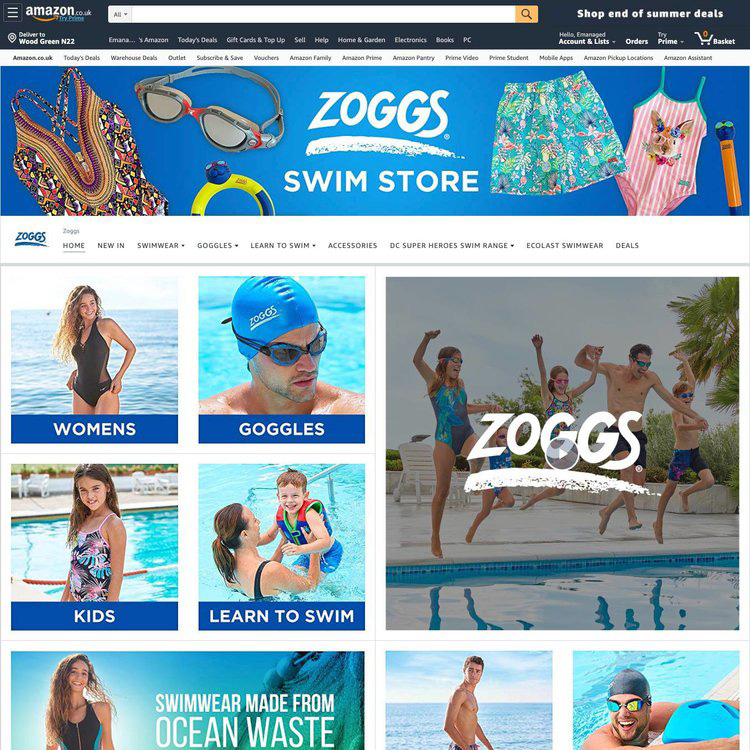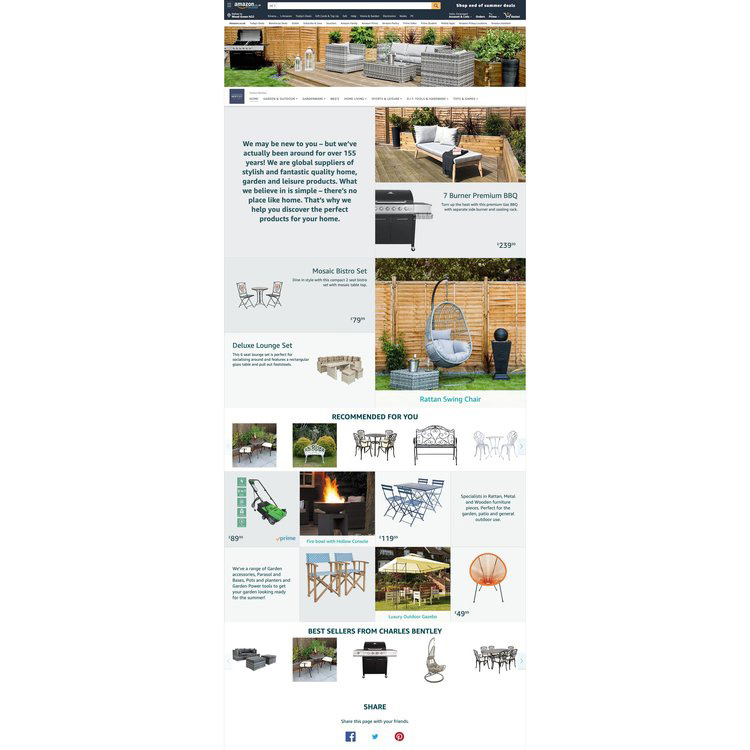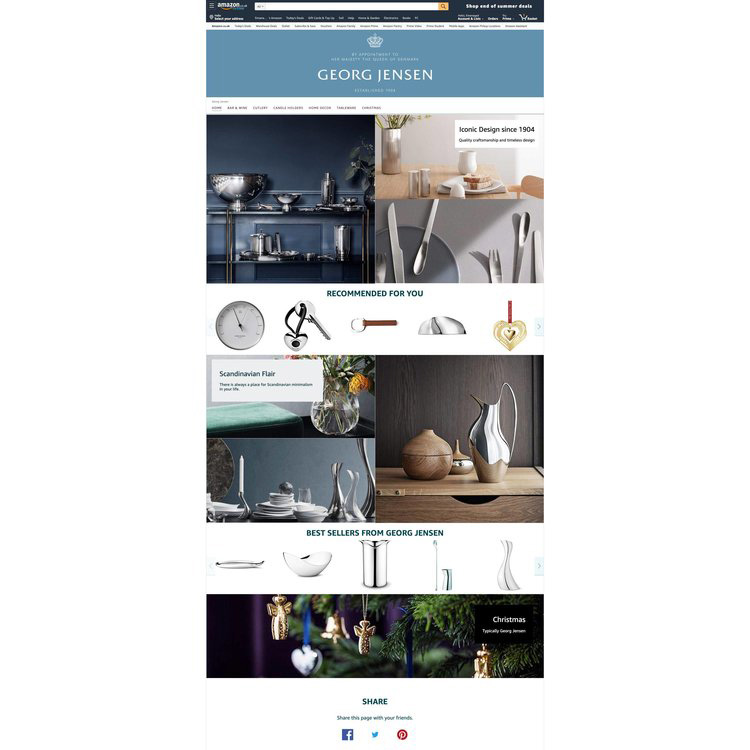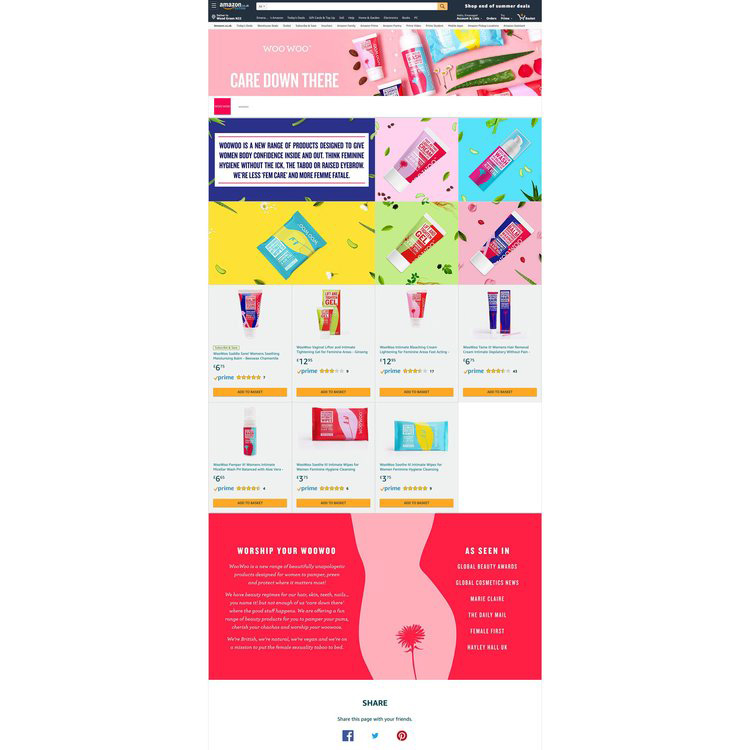Amazon Stores
Creative Management Solution For Vendors & Sellers
Amazon Stores
250 million dollars was attributed to sales revenue on Amazon stores last year. That’s a lot of extra money attributed to a marketing tool which didn’t exist just a few years ago!
But an Amazon Storefront does not print this money automatically or blindly. Sadly.
Many don’t realise that Amazon Stores don’t get traffic organically. Yes, that’s right. Your store page(s) are just sitting around, never being found, unless you’re proactively driving traffic to them.
Also, we don’t like the name ‘Storefront’ because they can be used far more effectively if you simply change their name. Trust us, we make more sense below about this.
If you are a Brand on Amazon with just one ‘Storefront’, you’re missing out on what this tool really has to offer. See below how to get started and what to consider.
Or… if you want us to walk you through every step and do the work, click on the button below!
How Amazon Stores Elevate The Shopping Experience
Brand Growth, Defence and Alignment
Capture Traffic via Campaign Focus
Increase Sales… Need another reason?!?
New Product Launches and More!
A piece of a wider Strategy

We over use the word ‘strategy’ perhaps, but it’s because we know its overlooked so often. An Amazon Store is really important when you have the right strategies underpinning its formation and right analytics supporting its iteration.
But if you just are making stores blindly, because you know you need to do ‘something’ with them and you have time in the day to spend on it, we’re sorry to say you’re wasting efforts and energy.
Let’s be clear. Amazon Storefronts are vital. They are very important for a seller to use. The challenge is how to use them effectively without wasting time, money and effort.
- We can implement your designs, or create designs for you. We know exactly how the templates work and the limitations and features they have.
- We create Amazon stores to feed a wider strategy. Are these going to be supported by PPC campaigns? Sponsored Brand Ads? Marketing events?
- What is the goal of the Amazon store? It needs one that is focused and aligned to the other activities on your Amazon store. Are you launching a new Brand or product range? Are you promoting a top seller from your website? There any numerous ways to use them.
- We report on and iterate these stores. They are manual to make, and manual to manage. They need time and upkeep and efficient tracking. We keep them maintained so the wider strategy is unified.
Hang on, let’s talk about the name
Before you get started, its important to note the name ‘Storefront’ is misleading. As many of you perhaps rightly assume by the name, the sole purpose of this section is to create a custom storefront of your product on Amazon. Right?
Wrong. While it’s good practise to have a Storefront with all your product presented, don’t expect huge gains when it goes live. The whole nature of calling it a ‘storefront’ misleads the true value – these are in fact landing pages.
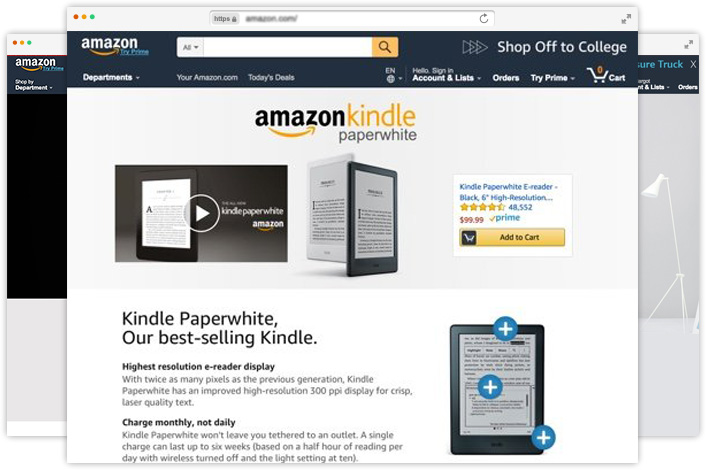
A couple of things to consider:
- A Buyer on Amazon is starting their journey by searching for a product. They find products first, your storefront after. They are ‘window shopping’ at this point, curiously checking what else you have from their first product find. A buyer rarely finds your storefront first.
- The Storefront isn’t going to be found organically. Nope. If you make a Storefront and drive zero marketing to it, you are expecting a very low amount of traffic.
Let’s rename what these are – Landing Pages. These are pages where you build out a specific theme of focus, then wrap marketing around them. This should start with your Storefront, but it really should evolve much from there.
- Make pages promoting new product launches.
- Make pages promoting your Brand values and why you’re different
- Make pages for clearances and Holiday specials
- Make pages about how much your Dog loves your product… OK, maybe not that far.
But the point here is to use this area to make more than just a storefront few people will ever find thereafter. Make pages you intend to drive Brand Display Ads towards, or funnel external marketing towards. Just like in the world of websites, Landing pages are about a marketing push and a clear journey a buyer takes from the ad all the way to the final actionable page.
How do you make one? Easy.
- Log in to the Seller Central account… maybe that step was a little obvious.
- Select ‘Storefront‘ from the Menu. From here, you will enter the Stores creation page.
- Enter the Brand name. This will be the name of the store, so pick something relevant to the goal.
- Upload a Brand logo. You will want to use a simple logo so it will not be distorted when viewed on smaller screens, such as mobile devices. Upload a 400×400 pixel image for best resolution.
- Enter a description.This will be used by search engines.
- Amazon have provided desktop and mobile-friendly page templates to help you create a homepage for the store. You can choose from three types of templates:
- Marquee: A mix of images and text showcases several products and helps you tell the brand’s story.
- Highlight: Large images highlight top selling items.
- Product grid: Displays several products at once.
- As you have summarised with the above step, your creative design flexibility is… well… its not flexible. You can make nicely designed images for the sections, but you are limited by the templates in how this all visually comes together. We recommend using designers with Amazon A+ experience for this reason. We can do design work for you too of course!
- Drop your content and ‘Publish‘
- Sit back and watch the money roll in. If that doesn’t happen, consider some Brand Display Ads now so all your hard work is actually found!
When you publish the store, Amazon review it using a moderation process which cal take about 72 hours. To avoid rejections, make sure your page follows the guidelines for:
- Approved product lists
- Appropriate language, spelling and grammar
- Image quality and compliance
- Video quality and compliance
- No prohibited content
- No unsupported claims (for example, “America’s best-selling hat”)
- No contact information or links outside of Amazon
- No references to Amazon ratings, rank, prices, discounts or savings
If Amazon rejects a store page during the moderation process, it’s because they don’t like you personally. Just kidding. They will however email you with the page elements that need to be changed in order to be approved.

